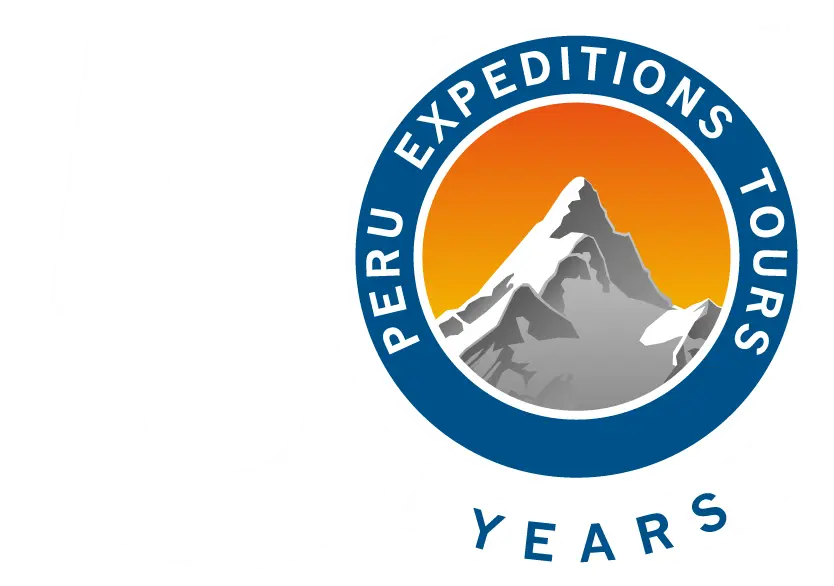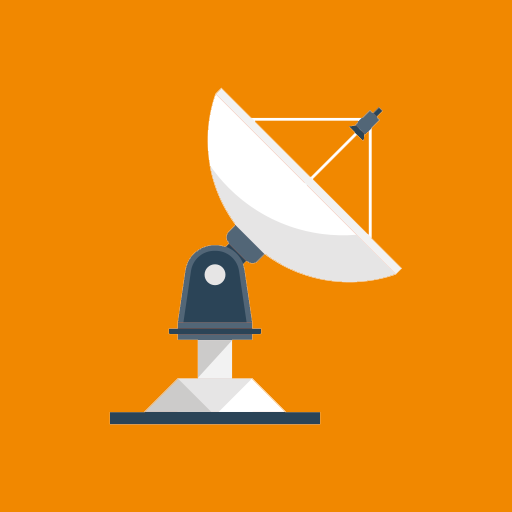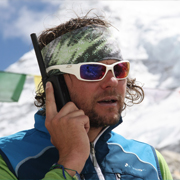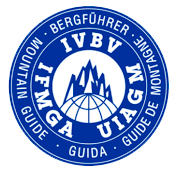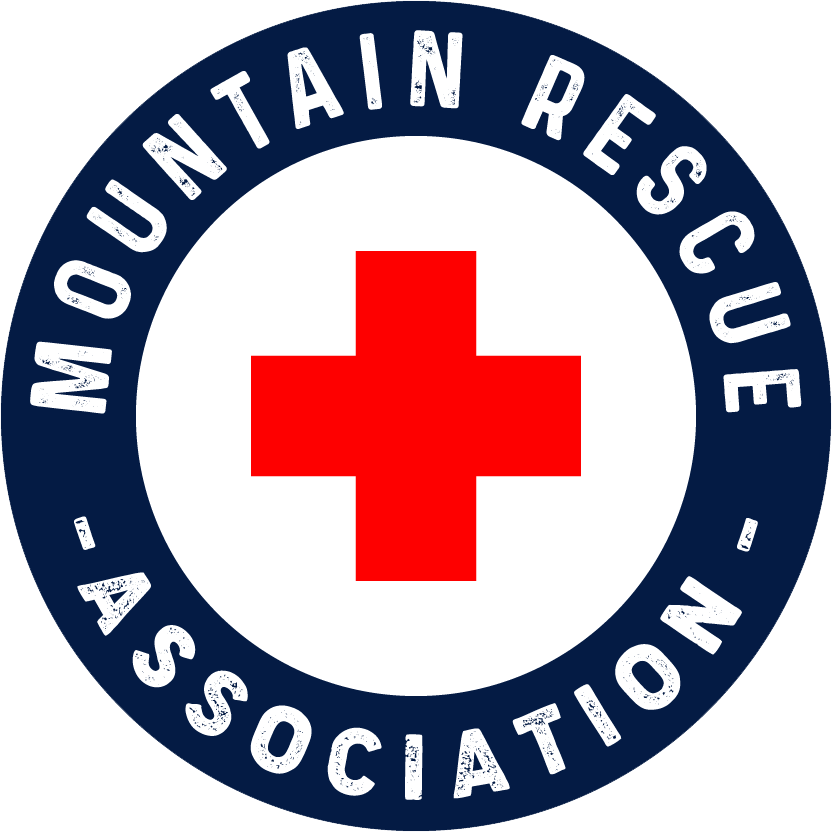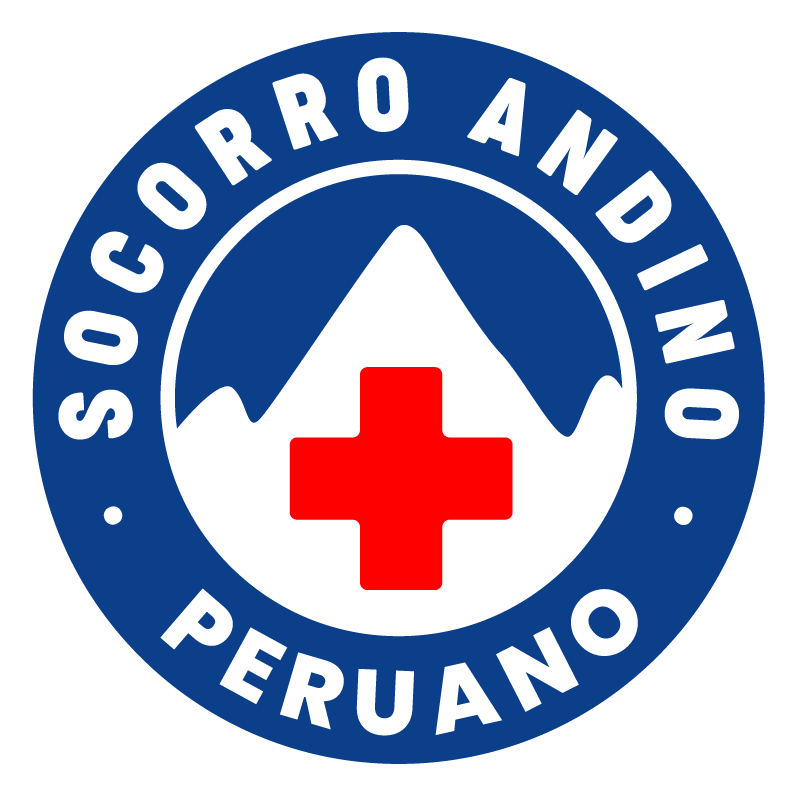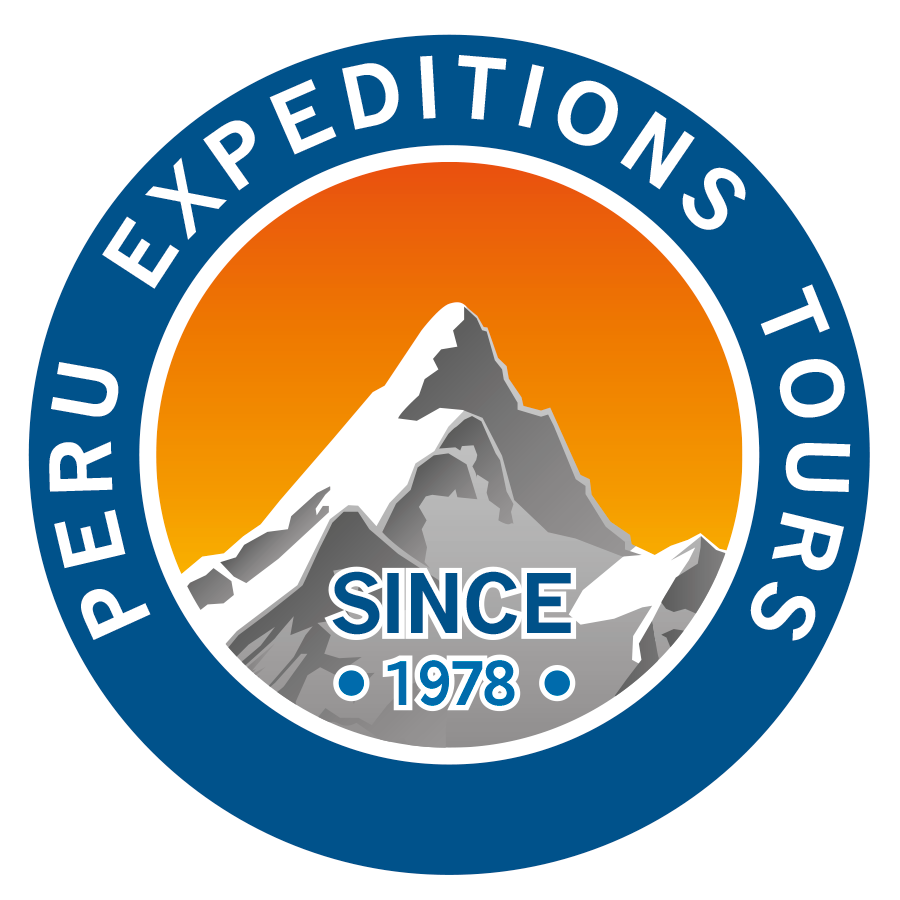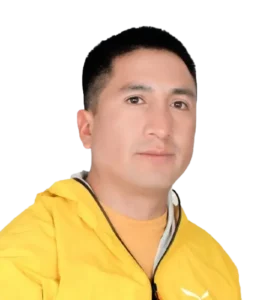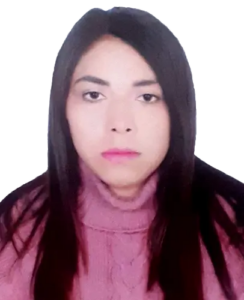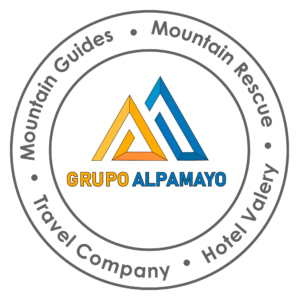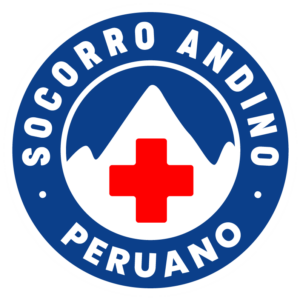Culture Chavin Huantar Culture over (3180 m)
- Home
- Daily Tours
- Culture Chavin Huantar Culture over (3180 m)
Highlights of the Cordillera Blanca. The highest tropical mountain range in the world, the Cordillera Blanca is part of the spectacular Andes that form the spine of South America. A mecca for hikers and outdoor enthusiasts, the region boasts over 50 peaks that exceed 15,000 feet, 700 glaciers and 300 lakes.
Culture Chavin de Huantar: Located in the Peruvian Andes, Chavín de Huántar was the strategic capital and religious center of the pre-Inca, Chavín civilization. The project team from the University of California at Berkeley traveled to Chavín to digitally preserve this important site. The project’s goal was to support and supplement archaeological activities and research being conducted by Stanford University with the intent of the new data becoming the foundation for an on-site conservation plan.
Chavín de Huántar: The archaeological site of Chavín de Huántar sits at an elevation of 3,180m (10,425ft) above sea level in the Peruvian Andes and is located at the confluence of the Mosna and Wacheksa rivers. Chavín once intersected several major trade routes through the Cordillera Blanca mountain range, a strategic location for the capital of the Chavín civilization. The site is located near the Callejón de Huáyla Valley where the village of Chavín de Huántar is located. Chavín is now served by a recently-upgraded, asphalt roadway. Covering 12,000 sq m (129,167 sq ft), the site includes massive temple structures with significant interior and subterranean space, pyramidal platforms, courts, and sunken plaza spaces, most of which are aligned on a common axis. Over time, river floods have eroded much of this stone architecture; its mountainous location has also made it susceptible to destructive landslides (as recent as 1945) and earthquakes (as recent as 1970) over the centuries.
History: Chavín de Huántar was a ceremonial center of the Chavín, a pre-Inca culture. The center was situated at an unparalleled crossroads between the mountains, the jungle, and the sea; the influence of all these environments likely had a strong effect on their culture and iconography, as well as their economy. It was first inhabited around 1500 BCE, during the Initial Period; during this period, the Old Temple was constructed which was a U-shaped temple and platform, encompassing the Circular Plaza. This temple contained several subterranean galleries used for religious rites, storage and possibly living space for groups involved in rituals at the temple. The Lanzón Gallery was housed in the heart of the Old Temple. The site’s most illustrious era was during the Chavín Horizon (800 – 300 BCE). Similar belief systems and rituals were carried out during this new era, but the entire center was enlarged with new constructions. The site of the Old Temple was expanded to include the New Temple, which also had galleries and plaza spaces. The Old Temple is believed to have still functioned after the completion of the New Temple. Social instability and upheaval at Chavín de Huántar occurred between 500 and 300 BCE, the same time that the Chavín civilization began to decline. Sometime after its abandonment, a small village occupied the Circular Plaza and some temples were salvaged for building materials.
Project Narrative: In July 2005, a group of students from the University of California, Berkeley traveled to Chavín de Huántar in Ancash, Peru for an archaeological 3D laser scan documentation project. The project’s goal was to support and supplement the archaeological activities and research being conducted at the site by Stanford University. The intent was the new data would become the base data set for executing a conservation plan for the site. The students implemented HDS, panoramic photography, HR photography, traditional survey, time-lapse photography, and close-range 3D scanning. The subject of the project was all above-ground structures and selected subterranean galleries. The venture was funded jointly by Stanford University and the Kacyra Family Foundation.
Preservation: Chavín’s state of preservation is poor, but gradually improving. In 1998, Peru’s National Institute for Culture (INC) asked for emergency assistance to stabilize and protect the site from the upcoming El Niño weather pattern. During the assistance, which improved drainage and stabilized the galleries, it was noted that the site had never been subject to a specific conservation or preservation effort and the state of conservation of the major structures was extremely poor as a result of climate, structural instability, topography, the materials used in construction, and badly managed tourism. A new access road was recently constructed, but before construction began, Stanford University performed excavations of the location known as “La Banda” in order to secure any archaeological remains and help assure the damage done by the road is minimal. UNESCO has urged Peru to develop a site management plan. The new Chavín Conservation Partnership (CCP) is developing plans to protect the site from excessive tourism due to the construction of a highway to the remote, mountain-top area. The CCP trained a new conservation team in 2004/2005 and the team has begun working on the preparation of 600-800 artifacts for consolidation, conservation, cataloguing, and interpretation. Artifacts are also being prepared from the collections in the site museum and Lima’s National Museum for the new National Museum of Chavín, slated for construction in 2006. Through support and donations a conservation lab and storage facility were purchased in 2004 and the development and enforcement of a site Master Plan is underway.
- Full day
- January to December
- Easy
 Condition
Condition
Travel Program
Day 1: Huaraz (3100 m) - Privat transport to Recuay - Ticapampa - Catac - Laguna Querococha (4516 m) - Túnel de Cahuish - Valle de Conchucos - Chavín de Huantar (3180 m) - National Museum of Chavin - Return to Huaraz
We pick up you at 9:00 am, we drive in the way to ancient temple of Chavin, the greatest exponent of the Andean civilization, today declared Cultural Heritage of Humanity. On this tour we will pass by Recuay (3400 m) known as the “Gateway of the Callejon de Huaylas”, then the district Ticapampa, Cátac (3640 m) where we will observe mine tailings on the banks of the Santa River, the district Cátac and typical houses built of adobe plastered with plaster and tile roofs. We visit the lagoon Querococha (3980 m), know the map of Peru (naturally formed by fluvial erosion), pass through the tunnel Cahuish (4516 m and 480 meters in length). Conchucos arrive at Valley with its Andean villages Tambillos, Machác, Quercos. Finally we reached the Archaeological Monument Chavin (3180 m), ceremonial center dedicated to the worship of the god Jaguar, Snake and bird of prey. In the tour we will see the famous “Lanzon Chavin” head nails, the altar of chinchay shock, the porch of the Falcons, internal galleries, ceremonial plazas and others. Finally we visit the modern Chavin National Museum in its halls ceramic vases, pututos seashell, the obelisk Tello and other cultural property recovered in the temple of ChavinWe. We will return approximately about at 7:30 pm – Arrival in Huaraz.
Overnight
Hotel
Hiking
1 hours approx
Meals
B/L/-
Included meals: B=breakfast; L=lunch; D=dinner
What's Included
Services included in the prices:
- Transport private to start point to hike and viceverse
- Official trekking guide
- Entrance fees to Chavin Temple and Museum
- Pick up at your hotel (at 9:00am)
- First aid kit and oxygen (if necessary)
Not included:
- International flights to Lima / Peru round trip
- Transfer from the airport for bookings of individual flights with different times of arrival / departure
- Exit tax at the airport in Lima
- Travel accident and health insurance
- Luggage insurance and trip cancellation
- Meals in restaurants in Lima and Huaraz
- Pick up at the airport in Lima to the Hotel
- Transfer from the Hotel to the airport and bus station
- Transport public bus or Domestic flight Airline LC-Peru
- Hotel Casa Andina 2 nights in Lima or other hotel
- Hotel San Sebastián 4 nights in Huaraz or other hotel
- Personal expenses
- Box Lunch (amount depends on you)
- Personal equipment (such as clothes while traveling in the vehicle and hiking. But to be in the sheltered lagoon and hats with earflaps attire is required, hiking shoes, sometimes waterproof/goretex if its rainy season, Sunscreen, Sunglasses, camera, hat or sun hat, sports drinks or water (2 liters approx), etc.)
- Tips
Keep Exploring More Travel Ideas Across South America | Popular destinations
Discover a wide range of travel ideas throughout South America. Every one of our proposals is fully customizable to fit your preferences and make your journey truly unique.
- Visit Machu Picchu
- Inca Trail Trekking
- Sacred Valley Tour Cusco
- Rainbow Mountain Cusco
- Backpacker trips to Cusco
- Choquequirao Trek
- Ausangate Trek to Machu Picchu
- Salkantay Trekking Adventure
- Short Inca Trail to Machu Picchu
- Lares Trek to Machu Picchu
- Vilcabamba Trekking
- Climb Volcano Chachani
- Visit Salar de Uyuni
- Bolivian Highlands
- Climb Huayna Potosi
- Visit Isla del Sol Sun Island
- Climb Volcano Sajama
- Climb Cotopaxi & Chimborazo:
- Climb Volcano Ojos del Salado
- Visit Torres del Paine
- Climb Mount Aconcagua
- Visit Iguazu Falls & Rio
- Climb Mount Orizaba
- Visit Rainforests and Volcanoes
- Climb Volcano Tolima
What to Bring
What to Bring or take fo Day Hiking and Technical Equipment for Climbing Expedition
This equipment list is compiled to provide you with adequate help when choosing your equipment for a climb. Most items are required. Please consider each of them and make sure you understand the function and exclusive use for mountaineering, before substituting or removing items from this list. Please note that this list has been carefully annotated by the organizer. Remember that mountaineering, climbing or mountain expeditions tours is an extreme, risky sport, therefore everything related to it is of great attention.
Equipment Trekking
![]() Hiking backpack for hiking 50 to 60 liters
Hiking backpack for hiking 50 to 60 liters
![]() Light gloves for hiking or (Optional Mittens waterproof)
Light gloves for hiking or (Optional Mittens waterproof)
![]() Medium weight socks
Medium weight socks
![]() Sleeping bag (-15º to 20ºC)
Sleeping bag (-15º to 20ºC)
![]() Small daypack for one day hiking 30 liters
Small daypack for one day hiking 30 liters
![]() Weather-appropriate clothing (think moisture-wicking and layers)
Weather-appropriate clothing (think moisture-wicking and layers)
![]() Hiking boots or shoes
Hiking boots or shoes
![]() Medium weight parka with fibber fill or down
Medium weight parka with fibber fill or down
![]() Rain poncho (or rain gear)
Rain poncho (or rain gear)
![]() Long-sleeved shirts
Long-sleeved shirts
![]() Fleece or Wool sweater and/or trousers
Fleece or Wool sweater and/or trousers
![]() Lightweight pants
Lightweight pants
![]() Cotton short-sleeved shirts or t-shirts
Cotton short-sleeved shirts or t-shirts
![]() Water bottle for hiking or trekking
Water bottle for hiking or trekking
![]() Strong waterproof duffel bag
Strong waterproof duffel bag
![]() Flashlight with spare batteries and bulb
Flashlight with spare batteries and bulb
![]() Towel for personal hygiene each participantFirst-aid kit
Towel for personal hygiene each participantFirst-aid kit
![]() Regular and long underwear
Regular and long underwear
![]() Knife or multi-tool
Knife or multi-tool
![]() Light cap and wool hat
Light cap and wool hat
![]() Sunglasses with UV certification, Sun block, lips
Sunglasses with UV certification, Sun block, lips
![]() The rest of the list Essentials as appropriate for your hike
The rest of the list Essentials as appropriate for your hike
![]() Grooming and personal hygiene kit
Grooming and personal hygiene kit
![]() One Hiking Buff per person
One Hiking Buff per person
Equipment Mountain
![]() 3 Locking carabiners, we recommended per person
3 Locking carabiners, we recommended per person
![]() We recommend 2 ice screws for each client
We recommend 2 ice screws for each client
![]() 1 Daisy Chain (Life Line) per each person
1 Daisy Chain (Life Line) per each person
![]() 2 Ice axes (per person) technical, we recommended GRIVEL company
2 Ice axes (per person) technical, we recommended GRIVEL company
![]() 1 ATC descender (Rappel), this is very necessary for technical mountains
1 ATC descender (Rappel), this is very necessary for technical mountains
![]() 2 Cords for prusik, very important (Size Cord 6 mm x 10 m. long)
2 Cords for prusik, very important (Size Cord 6 mm x 10 m. long)
![]() Gloves(Good gloves) for expeditions over 6000meters
Gloves(Good gloves) for expeditions over 6000meters
![]() Harness for climbing
Harness for climbing
![]() Sleeping pad / Mattress, we recommend with air or inflatable mattress
Sleeping pad / Mattress, we recommend with air or inflatable mattress
![]() Crampons, we recommended GRIVEL company
Crampons, we recommended GRIVEL company
![]() Walking sticks – Trekking Poles (optional), a pair per person, we recommended GRIVEL company
Walking sticks – Trekking Poles (optional), a pair per person, we recommended GRIVEL company
![]() Down Jacket for expedition
Down Jacket for expedition
![]() Very important to have personal clothing such as pants and jacket with GOROTEX certification
Very important to have personal clothing such as pants and jacket with GOROTEX certification
![]() First aid kit, for high mountains, because we as guides cannot medicate clients
First aid kit, for high mountains, because we as guides cannot medicate clients
![]() Backpack Capacity 60 liters, it is better to have a bigger backpack to go comfortably to the high camps, because here you have to carry all your personal things
Backpack Capacity 60 liters, it is better to have a bigger backpack to go comfortably to the high camps, because here you have to carry all your personal things
![]() Gaiters or Leggings, now modern boots already have built-in (Incorporated), but better to have an extra pair
Gaiters or Leggings, now modern boots already have built-in (Incorporated), but better to have an extra pair
Dressing appropriately for the mountains can make the difference between a pleasant trip and a really uncomfortable one. Clothing must provide the right degree of temperature, perspiration and be well ventilated. Preferably cotton clothing should be avoided, as in humid conditions they absorb body heat.
In general, the weather conditions in in the Andes of South America can vary from day to day and even throughout the day. Therefore, clothing must be versatile.
Please do not hesitate to contact us with any questions you may have regarding the necessary equipment.
Prices & Dates
FROM/TO
PRICE (USD)
TRAVEL STATUS
–
FROM/TO
PRICE (USD)
TRAVEL STATUS
–
FROM/TO
PRICE (USD)
TRAVEL STATUS
–
FROM/TO
PRICE (USD)
TRAVEL STATUS
–
- Single Supplement (I want my own room and tent) – $000 on request.
Please note: Insurance for emergency evacuation is required for this trip. Call for more details.
» Additional dates available upon request
» Rates may vary from July 26th to 31th for the national holidays
Prices (per person):
| 1 PAX | 2 PAX | 4 PAX | 6 PAX | 8 PAX | 10 PAX | 12 PAX | 14 PAX |
|---|---|---|---|---|---|---|---|
| 500 USD | 250 USD | 230 USD | 200 USD | 180 USD | 150 USD | 130 USD | 100 USD |
Deposit for reservations: * — USD (– EUR) ✓ Full payment 40 days before. No refund if you cancel less than 30 days!
Places: 
Trip-code: Number ►PE-404
Duration: 1 day
Participants: Minimal: — Maximal: —
Members: We don’t have an open group to join – We can open a new group – Contact us!
Country / Location: Peru
Mountain Guide: Edwin Albino Lliuya
Other dates / additional info: Contact us!
3% early bird discount when booking 6 months prior to departure 2023
Legend Booking-information:
EZZ Single room supplement
🟢 On this trip, places are still available.
🟡 On this trip, only a few places left.
🔴 This trip is sold out / closed.
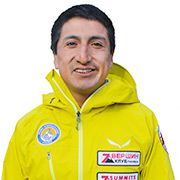
Eric Raul Albino Lliuya
Expert guide certified by AGOMP
General Sales Manager of Peru Expeditions
- WhatsApp: +51 943 081 066
- E-Mail: [email protected]
Hans Honold | Certified Mountain and Ski Guide
For a trip with a Professional Certified Mountain Guide from abroad with your own language that you speak, please request us to get in touch. We have guides working for our company from all over the world who are members of IVBV/UIAGM/IFMGA Certified Guides.
- Tel: +49(0)7344 929144-0
We are a Private Company with a Specialized Peruvian Andean Rescue Team “Socorro Andino Peruano”, offering expert High Mountain Rescue Services. Additionally, we provide satellite internet access during treks or expeditions, ensuring the safety and connectivity of our clients at all times. For more information, feel free to contact us via email or phone
- Tel: +1 (617) 459-4200
Only $1000 deposit to book
Pay over time, interest free
No booking fee, no change fee
24/7 support
Accommodations
Scroll through our exclusive accommodations for this trip below. Although very unlikely, we will be able to make substitutions when necessary. The comfortable accommodations that guests stay in every night offer comfort, the level that these options are are 3 stars and some hostels in some towns of first class quality to make your stay very pleasant.
*These exact accommodations are not guaranteed. In some cases, alternative accommodation of similar quality and location can be used.
Videos
Frequently Asked Questions
What our travelers or clients always ask questions before joining our trips, tours & expeditions, read all the information provided here.
Suggested FAQs
What experience and how fit do I need to be to climb this mountain? Is this program suitable for children or older people?
For our mountain climbing trips: If they are easily accessible mountains: For easy-climb mountains, well, you don’t need much experience, but if you already want to climb mountains above 6,000 meters and the conditions become more difficult, we recommend if you already want to go through mountains above 6,000 meters, have a basic or intermediate course for a good preparation. It is very important to be physically, technically and psychologically prepared.
Regarding the preparation of children: Everything will depend on which mountain you want to climb with your children, once you are clear on which of our tours or mountains you want to go with your children, we can give you some advice or see how to prepare them before going with they.
Regarding older people: It all depends on the condition of experience and how well the person is in health, on many occasions older people are the best to walk in the mountains because they have more experience, so it is always good to ask and find out about their experience of older participant. If you have any other questions, please contact us. For calls or inquiries to this number: +51 943 081 066
Will I need to bring any technical equipment of my own? Is it possible to rent equipment, and if so, what would be the approximate cost of that?
In all our trekking or mountaineering trips we do not include personal equipment in our prices, so you have to have your own equipment: Personal equipment (such as boots, ice ax, crampons, harness, sleeping bag, mat, Goretex, etc. ) and also within each page of the trips that we sell is a small list so you can see it on our website.
Our company can also rent the materials that you would need for your trip, see the list here on our website: https://peru-expeditions.org/equipment-rental/ . For calls or inquiries to this number: +51 943 081 066
Are there any other special requirements such as permits/insurance/vaccines that I need to consider before the tour?
Safe and effective vaccines are available that provide strong protection against serious illness, hospitalization and death from COVID-19. Billions of people have been vaccinated against COVID-19. Getting vaccinated is one of the most important things you can do to protect yourself against COVID-19, help end the pandemic and stop new variants emerging.
We also recommend having accident insurance, we always recommend. We are Partners –Global Rescue. If you have any other questions about the trip we can schedule a date for a calling via WhatsApp. For calls or inquiries to this number: +51 943 081 066
What experience do I need to have? How fit do I need to be? Is this program suitable for children or older people?
To do long-distance hiking you need to at least train or do some tours such as visiting lagoons to get the experience and feel comfortable with what you do, it is always good before doing a long-distance hiking tour to test yourself so as not to be with the problems of altitude sickness during the trekking, and if you travel with children it is good to first train them before taking them, if they are accompanied by an adult of legal age, they must do a good acclimatization before going on the long-distance tour or with high altitude camps If you want to know or learn more advice, we can schedule a call via WhatsApp to clarify your doubts. For calls or inquiries to this number: +51 943 081 066
How far in advance should I start training and what kind of training do you suggest?
The preparation is according to what type and what technical level you want to go and climb a trek or mountain, the preparation will always gain experience little by little.
For this type of demanding or technical climbing sports, it is recommended to do some summits above 5 thousand meters beforehand and have good knowledge of high mountain technical equipment such as the use of technical ice axes, ice screws, correct use of crampons, and of course all the technical material. For more information, we can schedule an appointment to be able to explain in more detail everything about the mountain equipment and the preparations prior to joining our outings. For calls or inquiries to this number: +51 943 081 066
What is the average distance and altitude gain that we will hike each day?
Every day we have active walks around approximately 4, to 5 sometimes 6 hours of walking, everything is according to your pace and physical condition of each person, in each of our travel programs you will find more detailed information, and if If you need more information about each day of the travel program, we can schedule a call via WhatsApp to clarify your doubts or questions, for this please contact us. For calls or inquiries to this number: +51 943 081 066
Will there be porters to help to carry group and personal equipment?
In our trips, either hiking or mountaineering: Depending on the type or destination of the trip that you are going to book, in some parts of the treks you go with mules or donkeys or sometimes with horses, and within the mountain trips, the approach camps are also They go with mules or donkeys, but there are some stretches where pack animals can no longer reach. In this part, our logistics is fully supported by the porters.
Who are the porters? They are people from the area who were born and live in the heights of the towns, they are very strong and are very acclimatized, the reason is that after the tourist season ends they dedicate themselves to agriculture and livestock for that reason they are people They are used to the altitude and have lived in nature all their lives and they are happy to be in the mountains together with our expeditions. For calls or inquiries to this number: +51 943 081 066
How will accommodation and meals be handled during the trek?
About accommodation or meals during the tour: Well, depending on the type of tour, when the tour is a classic cultural tour or a city tour, we eat during the route in tourist restaurants and sleep in category hotels that the client has requested.
If the tour is with camps and trekking: During the activity, logistics we include the service of Breakfast, Lunch, and Dinner with traditional and typical meals of the region where you are going to travel with us, during the night we stay in tents, and we have a special tent for the kitchen and another for the dining room.
If the trip is at altitude or in the mountains: We bring special high mountain food, It are quicker meals to cook and we provide complete logistics such as Breakfast, Lunch and Dinner, and we sleep in special 4-season high mountain tents, with the best tents. If you have any questions or concerns, we can schedule an appointment via Whatsapp to clarify all your doubts and give you better information so that your trip is an unforgettable tour.
What is the guide-to-client ratio to climb this mountain?
In mountains above 5000 meters: A local guide takes a maximum of 3 clients = Ratio 3pax = 1 local guide
In technical mountains: In large-big mountains we manage the travel policy, a guide and a maximum of 2 clients = Ratio 3pax = 1 local guide. For calls or inquiries to this number: +51 943 081 066
What is the best time of the year to climb this mountain?
For all the trips that we offer within our main tourist destinations such as South America and Central America, also including the ascent of the 7 continents and the 7 highest peaks of each continent, on each page of our website for each trip we indicate that month or what season to travel, then please read the information you find in our travel offers for each tour. If you have any other questions you can contact us by WhatsApp with one of our travel experts. Thank you so much. For calls or inquiries to this number: +51 943 081 066
Do I have what it takes to succeed on this expedition?
In the interest of the team’s enjoyment and success, we work with every single guest to ensure they are properly prepared and ready for this expedition. We pride ourselves on vetting every member to make sure that the team can bond and succeed together. It really sucks to be grouped with members that are much faster, or much slower, than you are. No one wants to the weakest link on a trip like this. By setting expectations and a solid training plan, we work to insure maximum cohesive success. Use this trip as an exercise motivator, and we will succeed together with style.
How can I get to the trailhead/meeting point?
For the pick-ups of each trip, depending on the place or the trip that you are going to make with us, the meeting point is always at our office, in one of our trips we pick you up where you are staying or staying, or in some cases a A representative of our company will pick you up and then ship you to your transport to continue with your destination of the tour or trip you have booked with us. If you wish to request more information, do not hesitate to contact us. For calls or inquiries to this number: +51 943 081 066
What is the best time of the year for this hike?
For all the trips that we offer within our main tourist destinations such as South America and Central America, also including the ascent of the 7 continents and the 7 highest peaks of each continent, on each page of our website for each trip we indicate that month or what season to travel, then please read the information you find in our travel offers for each tour. If you have any other questions you can contact us by WhatsApp with one of our travel experts. Thank you so much. For calls or inquiries to this number: +51 943 081 066
What happens in the event of bad weather?
About the meteorological conditions of the climate, we try to organize the trips of each tour in the best season to have the best views and enjoy the selected trip but sometimes even is good season we can have bad weather, in this case on hiking or treks trips The complications are minimal, but when this happens during high-altitude climbing expeditions, the complications can become very difficult, that is why the bosses or leaders of the local guides must always make the most correct decision for the safety of our passengers, so we always recommend listening to the best advice from the local guide assigned for each tour. If you have any other questions please contact us. For calls or inquiries to this number: +51 943 081 066
Can I join a group?
We as a local company and connoisseurs of tours have departures on different dates. The best thing to do is to join a travel group to take care of your budget, and of course you can join our groups, but on trips like mountaineering we recommend going in small groups. To join a group, ask us for the dates and we will send you the necessary information to be able to join any of our trips.
Why go in a private trip: For trips whether trekking or high mountains, going privately is the most recommended option, but the costs are more expensive. So, if one joins a group, the prices will be more reasonable. In the mountains, the only disadvantage is if you are in a wall with another partner and if one of the participants gets tired or gets sick. In this case, you have to abort or cancel the summit and return together. For more information, contact us. We can schedule a call via WhatsApp to clarify all your questions.
In a mountain, for example, if 3 people go and one of the participants falls ill on the route, for security reasons they have to cancel or abort the summit or return all together. The same in a technical mountain if the climbing partner gets sick they all have to return, for these reasons sometimes it is better to go private only because for a single person the costs are more expensive for the same reason that the trip would already be private .
For more information please contact us. For calls or inquiries to this number: +51 943 081 066
Additional information
VISA
CURRENCY
VACCINATIONS
FIRST AID KIT
WHY CHOOSE US?
JOIN A GROUP
VISA
VISA NEEDED
Citizens traveling for tourism purposes are exempt from the visa requirement for up to 90 days.
The passport must be valid for at least 6 months from the date of return to the country.
There are some countries that have some restrictions on the visa to be able to visit some countries in the world, for this important information request us to be able to give you more exact information, since the information changes every year and then to be able to provide you for more accurate updated information, → contact us!
CURRENCY
CURRENCY EXCHANGE DEPENDING ON WHERE YOU ARE:
Local money | $1 = 000 | EUR 1 = 000 = Let us to know which destination would you like to travel to so we can send you the current information of the day to your → E-mail, or by WhatsApp.
Local currency is exchanged on site. You can change both dollars and euros, the two currencies are the most used. We recommend taking bills of different denominations.
ATMs are available in the larger cities. Attention! We avoid dollars from the years 1996-2006 (some series from these years are not accepted at all). It is better to take dollars issued after 2006 to better the most recent of the current year.
VACCINATIONS
VACCINATIONS BEFORE YOU LEAVE
Compulsory vaccinations:
– They are not required
Recommended vaccinations:
– Hepatitis A and B (3 doses: 0/1/6 months, at least 2 doses administered at least 2 weeks before departure)
– Tetanus
– Diphtheria
– Typhoid fever
– Yellow fever (yellow fever)
– Antimalarial prophylaxis is recommended for traveling in the jungle area
In some destinations that you are going to visit, the information that is on our website may not be updated. To have more precise information, contact us by → E-mail or WhatsApp and we will provide you with more detailed information.
FIRST AID KIT
TRAVEL FIRST AID KIT
Everyone should have a personal first aid kit, and in it: medicines against diarrhea and stomach problems (sometimes appearing when the bacterial flora changes), painkillers and medicines for the throat. In addition, good creams with a UV filter or so-called blockers (sun radiation in the mountains is very high).
ATTENTION! Due to parasites and bacteria for drinking, we recommend using mineral water in the original bottle and boiled. To have more precise information, contact us by → E-mail or WhatsApp and we will provide you with more detailed information.
WHY CHOOSE US?
WHO ARE WE AND WHY CHOOSE US?
We are a travel agency that provides authentic and innovative experiences with a respectful relationship with the socio-cultural customs, the environment and the regulations of the countries we promote. We are characterized by the personalization of our tourist services, with empathy, attitude and professionalism; turning customer dreams into reality and exceeding their expectations. We are “Registered Travel and Tourism Agency”. To know more about → US click here please!
![]() The company Peru Expeditions Tours has the most experience in organizing commercial ascents and complex high-altitude expeditions.
The company Peru Expeditions Tours has the most experience in organizing commercial ascents and complex high-altitude expeditions.
![]() We have the most experienced and qualified guides for cultural trip, climbing tours, MTB tours, Ski tours, including famous climbers.
We have the most experienced and qualified guides for cultural trip, climbing tours, MTB tours, Ski tours, including famous climbers.
![]() We always give away team jerseys-T-shits, buffs, or a cap as a gift
We always give away team jerseys-T-shits, buffs, or a cap as a gift
![]() Good own personal tents to live in height and special big tents to dine inside the trekking or mountain.
Good own personal tents to live in height and special big tents to dine inside the trekking or mountain.
![]() The highest percentage of successful ascents.
The highest percentage of successful ascents.
![]() We provide the best living and eating conditions. We take into account the peculiarities of nutrition (you can order a vegetarian menu).
We provide the best living and eating conditions. We take into account the peculiarities of nutrition (you can order a vegetarian menu).
![]() Free conferences in the office with own videos material and photographs
Free conferences in the office with own videos material and photographs
JOIN A GROUP
ARE YOU LOOKING FOR A TRAVEL PARTNER?
Join a group with us: Trekking, hiking and expeditions. What is your profile? Are you planning to go on a trek or expedition in South America and you are not yet sure about the most suitable offer? If you are looking for a partner, we have the solution. Peru Expeditions Tours has some groups that you can join and share you experience with on an unforgettable journey. (» Upcoming Trips / Upcoming Departures / Open groups / Confirmed / Trips Guaranteed 100%) » WHERE WOULD YOU LIKE TO CLIMB, WALK, HIKE, AND TREK? For more information please click here! → JOIN A TRIP WITH US!
- Recommended Tours
Reviews
YOU ARE AN ADVENTURE LOVER and you want to experience something extraordinary and extreme?
You are an adventure lover and you dream of leaving with a thrill. Peru Expeditions Tours is also an option for you. Take advantage of our travel offer that we have for you!
“We don’t sell tours, we provide memorable lifetime experiences.”
We are a recognized tour operator 100% peruvian company that specialists in adventure and traditional tours service.
